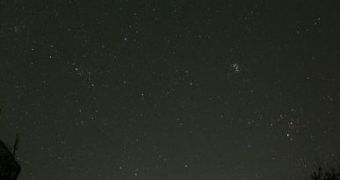August comes within a week and this time of the year is perfect for watching meteorites in the Northern Hemisphere. Even if the best views are in mid-August, part of the show starts before, meteor showers can be spotted this year from July 12 to the end of August.
The annual Perseid shower is the peak of the summer meteor shower and it is everybody’s favorite. And as this year the Perseids will coincide with a new moon, skies should be dark enough for everyone to see even the smallest meteorite.
Rich meteorite activity happens usually during the second semester of each year and viewers have twice the chances of seeing a meteorite in the predawn hours rather than in the evening. This phenomenon happens because in the evening, the meteorites need to have a speed higher than Earth's, in order for us to see them, as we are on the “trailing” side of the planet.
After midnight, particles along the Earth's orbital pathway are entering the atmosphere as meteors. When they reach the atmosphere, particles have speeds of 7 to 45 miles per second. They loose energy in the form of light, ionization and heat and create short marks of light that people call “shooting stars”, as mentioned in Space.com.
How many meteors are seen within an hour depends mainly on sky conditions. If the weather is clear and the radiant is overhead observers can see 6.5 meteors an hour. The radiant is the point in space from which a meteor shower appears to emanate. A clinched fist held at arm's length equals 10 degrees in the sky, so if the radiant is 30 degrees above the horizon, the hourly rate is halved.
The hourly rates of other meteor streams may not provide more than a fraction of the numbers produced by the Perseids, still meteors from different radiants combine into a multitude of colors, speeds and trajectories.
A few of these other streams are: the Kappa Cygnids which are classified as “slow moving and sometimes producing brilliant flaring fireballs”, the Southern Delta Aquarids, that produces faint, medium-speed meteors and the Alpha Capricornids, described as “slow, bright, long-trailed yellowish meteors.” If you are patient enough you might see an all-night meteor-show.
At this time, the Moon gets in the way of perfect meteor-seeing and it will reach full phase on July 25. Still, after August 3, it will have faded enough to let viewers savor their meteor-spectacle.

 14 DAY TRIAL //
14 DAY TRIAL //